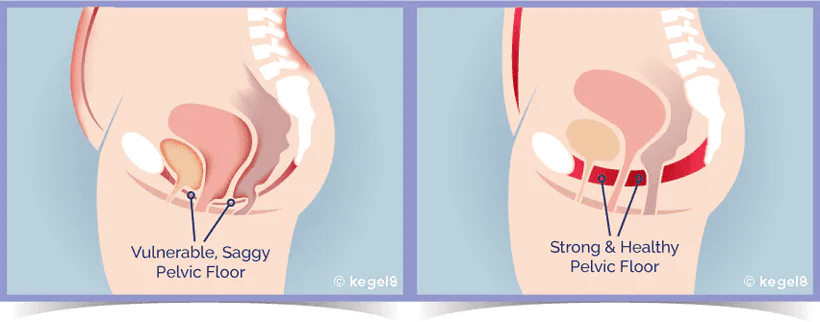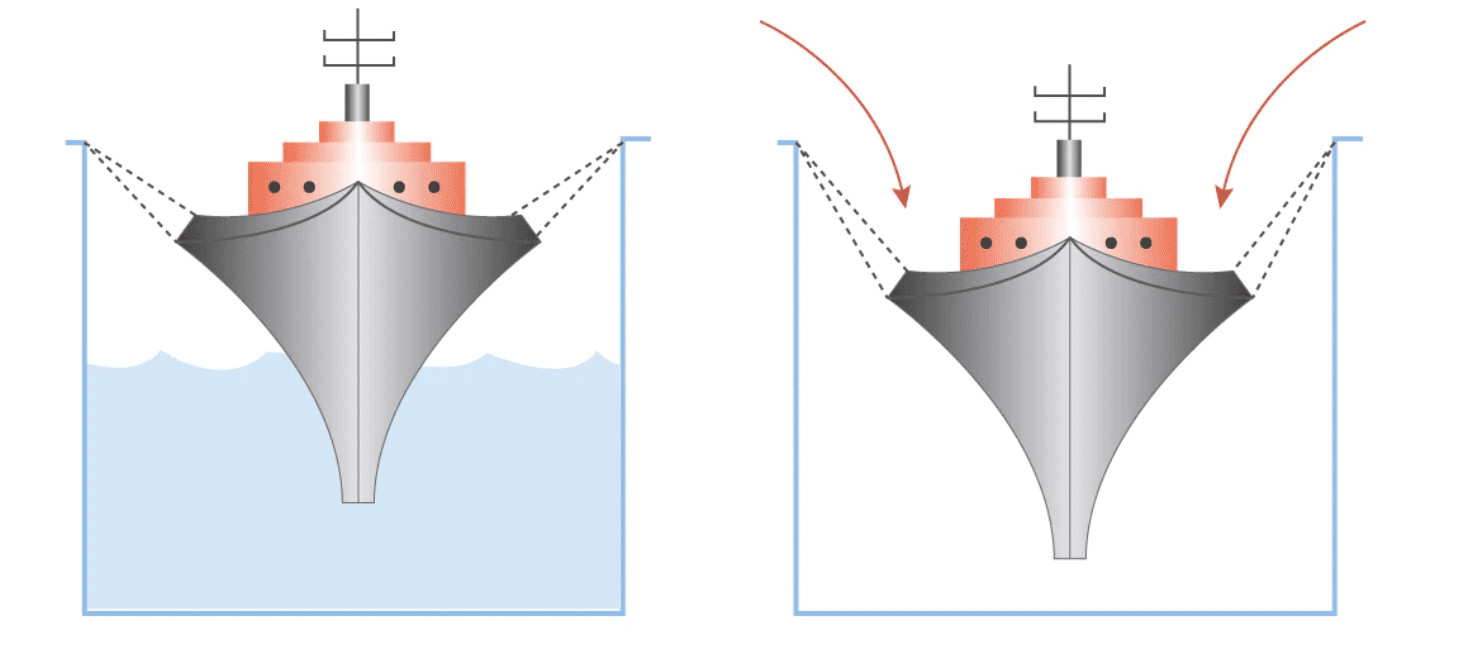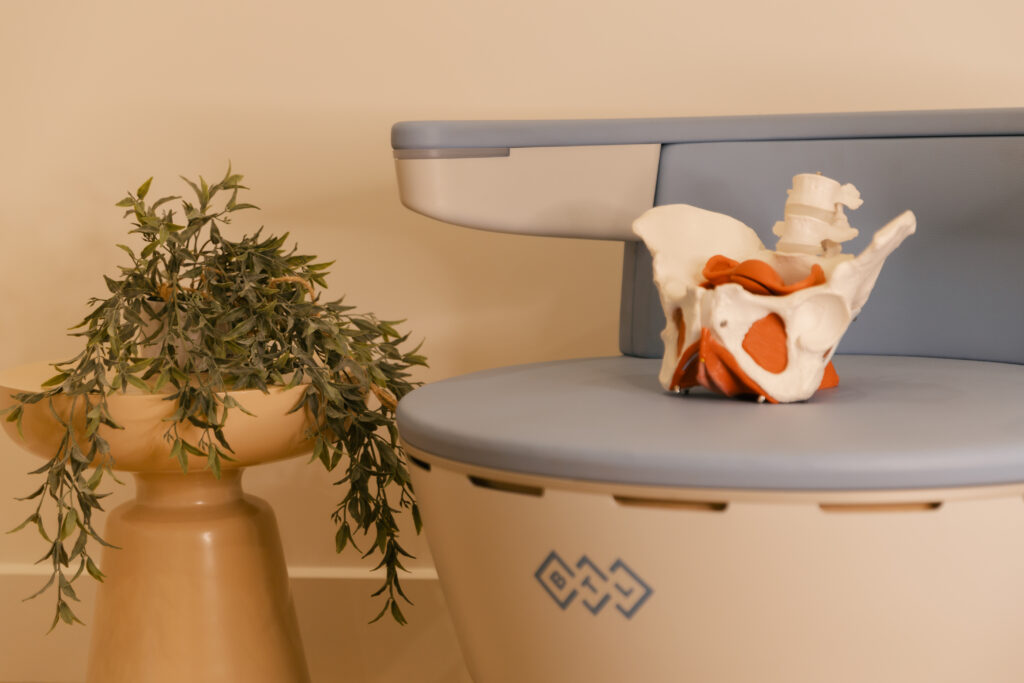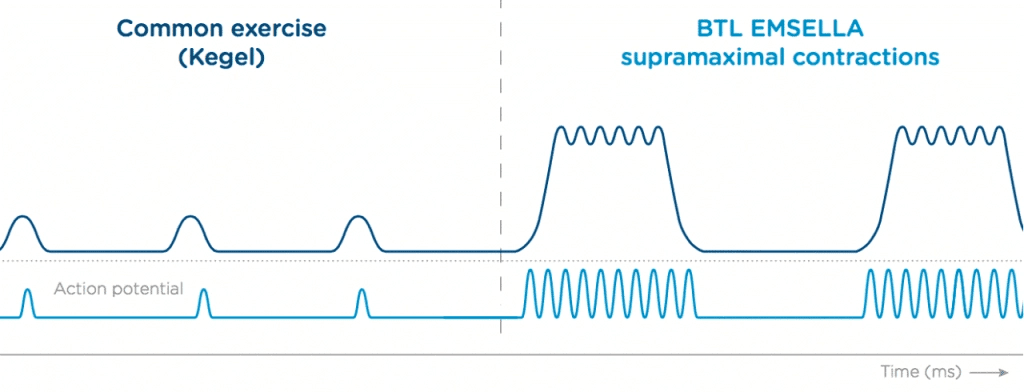The pelvic floor consists of a group of muscles, ligaments, and connective tissues that form a hammock-like structure at the base of the pelvis. This proper functioning of the pelvic floor is essential for various bodily functions, including bladder and bowel control, support for pelvic organs, and sexual function.
Despite its crucial role in maintaining overall health and well-being, the pelvic floor is often overlooked and neglected. In the U.S. alone, up to 25% of all healthy non-pregnant women have experienced a pelvic floor disorder. At TEMPL, we notice a similar trend as a large portion of our clients visit us for pelvic floor-related issues, whether it’s incontinence, prolapse, or sexual dysfunction.
This makes it all the more important for us to recognise the symptoms, understand the causes, and adopt proactive measures for improved pelvic floor health. Today we’re discussing the differences between a weak and a strong pelvic floor, the implications of each, and methods to maintain a healthy pelvic floor.

What happens when our Pelvic Floor is Weak?
A weak pelvic floor occurs when the muscles and tissues in this area do not function optimally.
Several factors contribute to the weakening of the pelvic floor – this includes pregnancy and childbirth, aging, obesity, chronic constipation, and certain medical conditions. Those with a weak pelvic floor often experience:
- Incontinence: One of the most common signs of a weak pelvic floor is urinary incontinence (stress, urge and mixed incontinence).
- Pelvic Organ Prolapse (POP): Weakened pelvic floor muscles can lead to a drop of the pelvic organs, such as the bladder, uterus, or rectum, into the vaginal canal. This condition can cause discomfort, a full sensation, and difficulty emptying your bladder or bowels.
- Sexual Dysfunction: A weak pelvic floor may contribute to sexual difficulties, including pain during intercourse or a decrease in sexual satisfaction.
- Chronic pain syndromes such as Back Pain: The pelvic floor is connected with the back and abdomen muscles therefore when it is weak, this can cause a chain reaction. Weakness in the pelvic floor can contribute to lower back pain.
When the pelvic floor muscles relax or are damaged, the pelvic organs must be held in place by the ligaments and fascia.

The diagram above shows the ‘boat in dry dock’ analogy. The left image shows the water as a strong pelvic floor which takes the pressure off the ligaments and fascia whereas the right shows no water / no support. If the pelvic floor muscles cannot actively support the organs, over time the connective tissue also will become weak, stretched and damaged!
Benefits of a strong pelvic floor:
- Improved Continence: Strong pelvic floor muscles help maintain better control over the bladder and bowel, reducing the likelihood of incontinence!
- Enhanced Sexual Function: A robust pelvic floor contributes to increased sexual satisfaction as it promotes better blood flow to the genital area and improves muscle tone.
- Prevention of Pelvic Organ Prolapse: Strong pelvic floor muscles provide crucial strength support to pelvic organs, reducing the risk of prolapse.
- Reduced Back Pain: A well-conditioned pelvic floor contributes to better posture and spinal stability, helping to alleviate lower back pain.
Maintaining Pelvic Floor Health
Regardless of whether your pelvic floor tends toward weakness or strength, there are lifestyle changes and exercises that can help promote overall pelvic floor health:
- Maintain a Healthy Weight: Excess weight can contribute to pelvic floor dysfunction. Adopting a healthy diet and exercising regularly can help maintain an optimal weight.
- Stay Hydrated and Eat a Balanced Diet: Proper hydration and a fibre-rich diet can contribute to regular bowel movements, reducing the risk of constipation and strain on the pelvic floor.
- Pelvic Floor Exercises (Kegels): Regularly practising Kegel exercises can strengthen pelvic floor muscles. However, it should be noted that Kegels are easy to do incorrectly! We advise that you consult with a professional first to learn the proper technique.

Maintaining Pelvic Floor Health: BTL EMSELLA
To maintain pelvic floor strength and function everyone recommends kegels. But ever felt like you were doing them completely wrong and gave up day 1? Yeh, me too.
There is an art to properly contracting and isolating the pelvic floor muscle to build strength and therefore improve functionality.
At TEMPL, we have an incredible device called the BTL EMSELLA, an FDA-approved device, that delivers high-intensity focused electromagnetic (HIFEM) energy to your pelvic floor, working to stimulate muscle contractions and help develop pelvic floor muscle mass and strength.
You can sit, relax and remain fully clothed while the device does all the work. In a single 28-minute session, the EMSELLA triggers 20,000 supramaximal contractions – this is the equivalent of performing 11,200 Kegel exercises!

Muscle Contractions: Kegels vs. BTL Emsella
The Treatment
What’s Involved?
Depending on the treatment area, a course of around 6-8 initial treatments (2 per week) is required before significant changes can be seen. Each treatment is 28 minutes long and you remain fully clothed. During the treatment, you will feel a slight tingling and vibrations in your pelvic floor muscles that will then turn into full contractions. This will be completely comfortable and tolerable. Take this time to read a magazine or catch up on some Netflix.
Preparation and Aftercare
There is no downtime with BTL EMSELLA and you can return to your daily activity immediately following the procedure.
Maintenance
Maintenance is required 3 months after the initial course – this varies depending on the severity of your pelvic floor disorder. We book you in for a follow-up appointment to ensure you maintain results and continue to enjoy the freedom and benefits.
Curious to know more?
Complimentary Emsella Treatment
We offer treatments with BTL EMSELLA for urinary incontinence, prolapses, erectile dysfunction, and other related disorders like endometriosis and want to share the benefits of this incredible device with you! New clients can receive their first EMSELLA session completely for free by booking an initial consultation session with us using the link below.
Rebate Information
For clients with Incontinence, the Australian Government has a payment scheme whereby they will give incontinent patients $635.10 per year towards continence products and this can be used towards Emsella treatments!
EMSELLA FAQ
For an in-depth discussion, we’ve written extensively about this EMSELLA and a recent FAQ piece. You can read more about how it works, and how it compares to other adjacent treatments on the market, including details about the treatment experience and results.

Founder & Head Clinician


